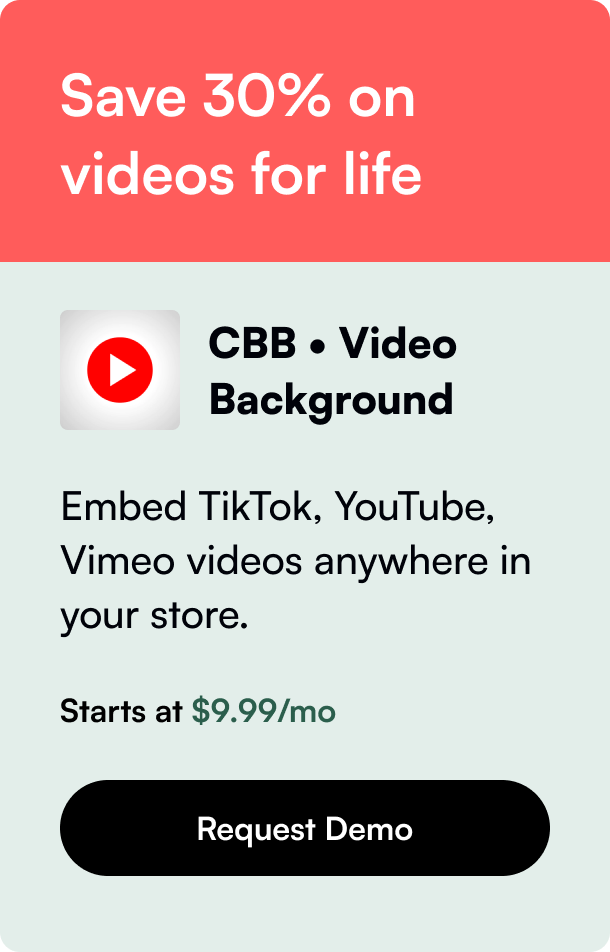Table of Contents
- Introduction
- What Does 'Noindex' Mean?
- Why Noindex Pages on Shopify?
- How to Noindex Pages in Shopify
- The Benefits of Noindexing Correctly
- Conclusion
Introduction
Have you ever pondered why some pages rank higher than others on search engine results pages (SERPs)? Or why certain pages, even when outdated or not meant for public viewing, still linger around the internet? It's all about controlling what gets indexed and what doesn't—a critical aspect of search engine optimization (SEO) that many online store owners overlook. This becomes particularly relevant when managing a Shopify store, where every page's visibility can impact your brand's search engine performance. This blog post will delve into the art of noindexing pages on Shopify, ensuring that only your most valuable content is seen by search engines and, subsequently, your potential customers. Strap in as we explore not just the 'how' but also the 'why' behind noindexing pages, ensuring your Shopify store’s SEO strategy is top-notch.
What Does 'Noindex' Mean?
Noindex is a directive used in meta-tags or the robots.txt file to tell search engines not to include a particular page in their index. In essence, when you noindex a page, you're asking search engines politely to ignore this page and not show it in search results. It’s a powerful tool for controlling your site’s content visibility online.
Why Noindex Pages on Shopify?
Not every page on your Shopify store needs to be indexed. There are several good reasons to hide pages from search engines:
- Duplicate content: To avoid penalties for having the same content across multiple pages.
- Privacy concerns: Certain pages, like internal use or upcoming products, should remain unseen.
- Non-essential pages: Cart, checkout, and user account pages offer little to no SEO value.
- Outdated content: Old promotions or products no longer available can confuse customers and hurt your brand.
How to Noindex Pages in Shopify
Let’s dive into the various methods to noindex pages on your Shopify store effectively.
Editing Robots.txt.liquid File
Shopify uses a robots.txt.liquid file, which can be customized to prevent search engines from crawling specific parts of your site. This file is crucial as it directs which pages should be invisible to search crawlers. Here’s a basic guide to doing it:
- Access your Shopify admin panel.
- Navigate to
Online Store>Themes. - Choose
Action>Edit code. - Search for
robots.txt.liquidin your templates and select it. If it doesn’t exist, create a new template namedrobots.txt.liquid. - Insert directives to disallow bots from indexing certain pages.
Using Robots Meta Tags
You might prefer a more granular approach by using robots meta tags directly in the HTML of the pages you want to hide. Here’s how:
- Find the
.liquidfile of the page you wish to noindex in your theme's code. - Add the following snippet within the
<head>tag of the page’s HTML:
<meta name="robots" content="noindex, follow"/>
This tells search engines not to index the page but to follow the links on it. Replace follow with nofollow if you don’t want search engines to crawl links on the page either.
Leveraging Shopify Apps for SEO
Managing your site's SEO directly through code can be daunting for some. Thankfully, several Shopify apps can streamline this process by allowing you to noindex pages through a user-friendly interface. These apps often come with additional SEO features like keyword analysis, image optimization, and more.
The Benefits of Noindexing Correctly
When done right, noindexing can significantly enhance your site's SEO performance. It ensures search engines focus on your valuable content, improving your overall rankings and visibility. Moreover, it can prevent the indexing of sensitive or irrelevant pages, enhancing your brand's online perception.
Conclusion
Understanding how to noindex pages on Shopify is pivotal for maintaining an SEO-friendly site that attracts quality traffic. By controlling which pages are visible to search engines, you can ensure that your most important content takes the forefront, driving more customers to your store. Remember, the goal of noindexing isn't to hide your site but to strategically showcase your best content.
Frequently Asked Questions
-
Will noindexing a page remove it from Google’s index immediately?
- No, it may take some time for Google to recrawl your site and update its index.
-
Can I noindex a page and still have it accessible to users?
- Yes, noindexing only affects whether a page appears in search results, not its accessibility via direct links.
-
Does noindex affect my site's overall SEO?
- Indirectly, yes. By hiding irrelevant or duplicate pages from search engines, you can boost your site's overall SEO performance by focusing on high-quality, unique content.
-
Can noindex directives be reversed?
- Absolutely. Removing the noindex directive and allowing search engines to recrawl your site will make the page appear in search results again.
Remember, optimizing your Shopify store's visibility is an ongoing process. Regularly reviewing and adjusting which pages are indexed can significantly impact your SEO success.








